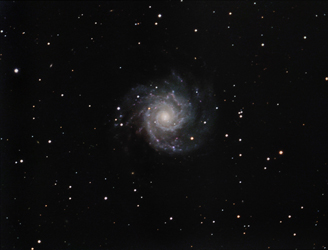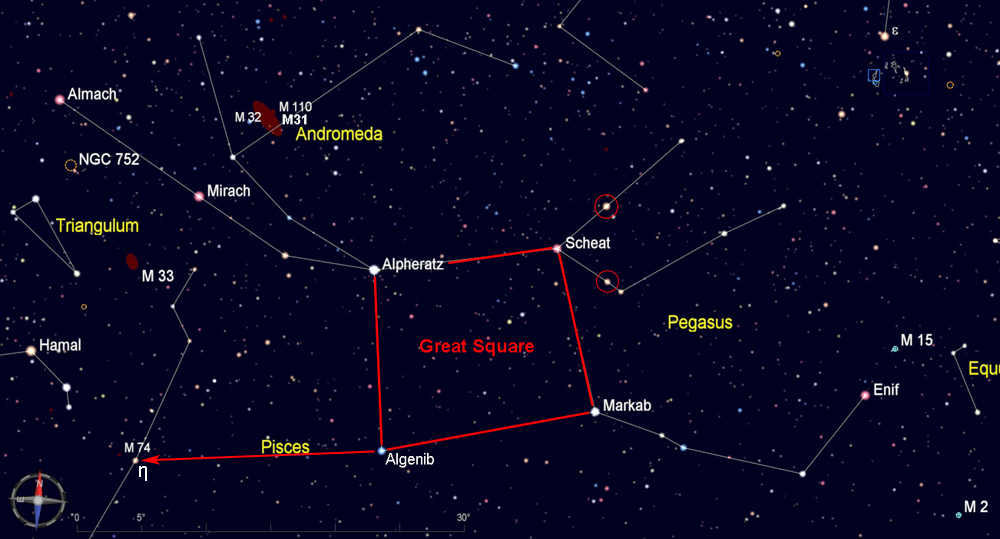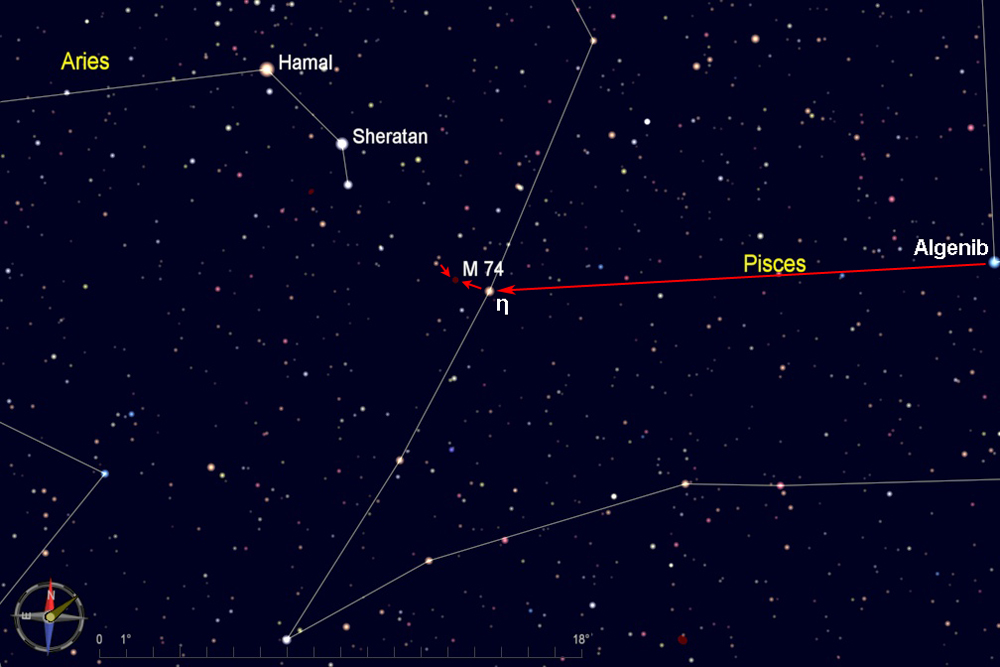
Start by finding the Great Square of Pegasus, which rises in the eastern sky during the early fall evenings, is high overhead later in the fall, and sinks in the western sky during early winter. To be sure you know how the square is oriented in the sky, look for the two stars outside the northwest corner of the square (circled in the chart below) that form a small triangle with Scheat.
Using the southern edge of the Great Square as a pointer, extend a line to the east about the size of the Square, and you will arrive at η Pisces, which at magnitude 3.6 is the brightest star in that area of sky.

From η Pisces, Messier 74 is just over a degree to the east-northeast. Note in the chart below that one degree further in the same direction is a pair of dim stars that will be visible in binoculars or a finderscope. M74 is about halfway between η and this pair of stars. Because of its low surface brightness, M74 may be hard to spot, so take your time and look for a dim circular glow.
